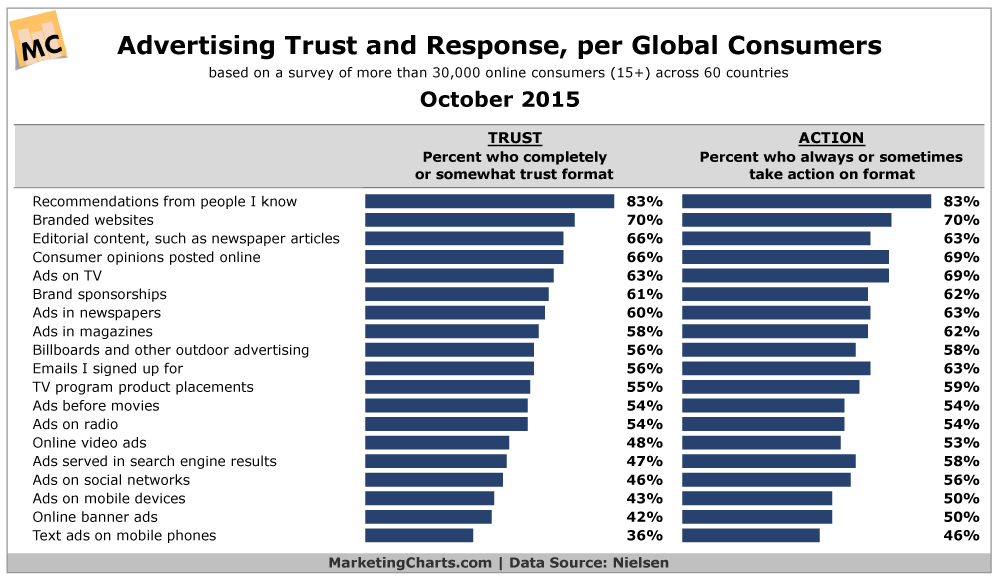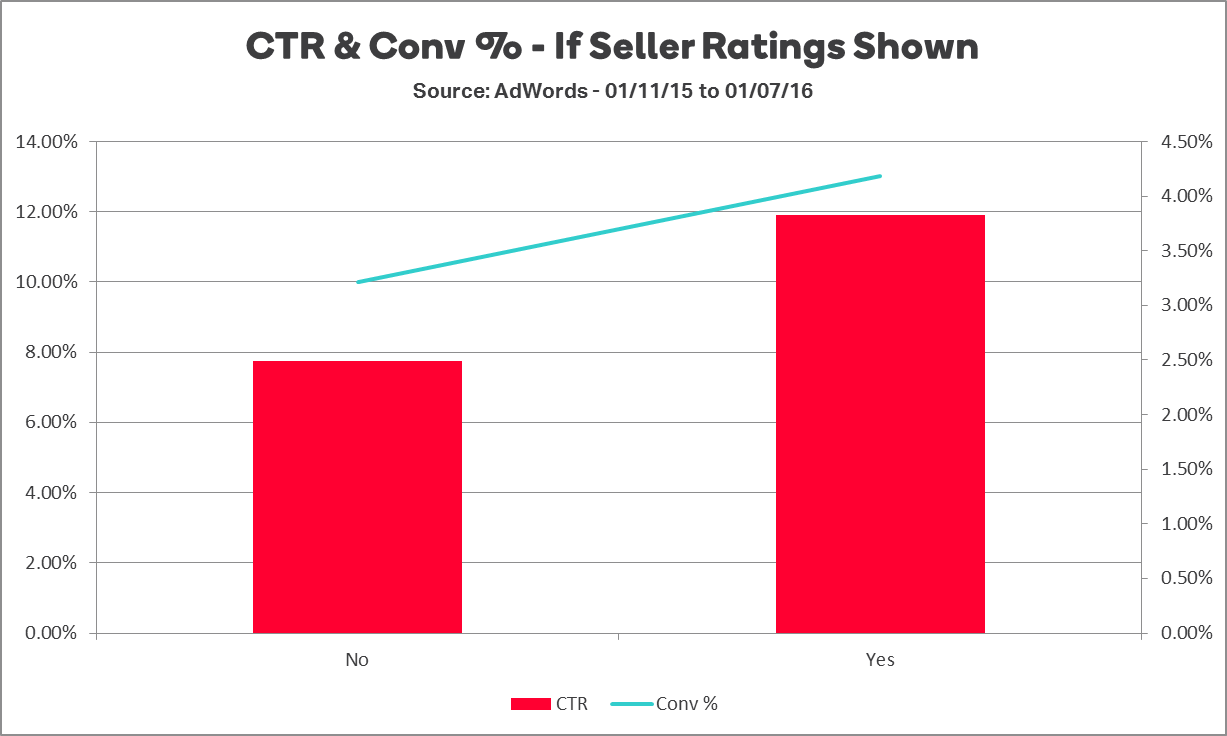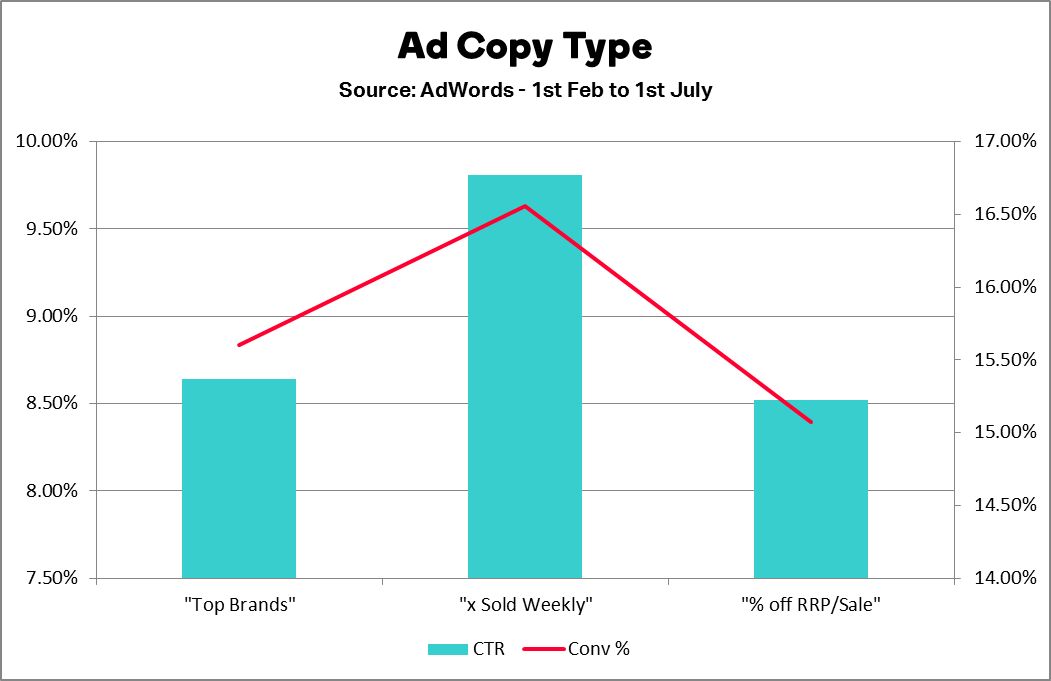Behavioural economics and the principles behind it govern the way in which we (as consumers) make financial decisions. We generally share the same cognitive biases – the deviations of rationality that occur when making judgement. An example with specific relevance to ad copy writing is the tendency to rely too heavily on the first piece of information acquired about something when making decisions about buying it – a process referred to as ‘anchoring’.
Did you know that an astounding 97.4% of digital marketers are right handed? I’m guessing you didn’t – because that figure was completely fictitious (if you’re really interested, studies actually show that this is closer to the average of 72%). The fact that you believed the second figure proves that numbers can be powerful – your brain anchored the first figure which made the second more conservative figure seem rational in comparison – when actually neither of these statements is actually true (roughly 88% of us are right handed - that one is true, I promise).
Another example of this used often by retailers would be loss aversion – the tendency for individuals to prefer avoiding losses rather than accruing gains. As humans, our speed of attachment is astoundingly fast – which is often why sales assistants encourage you to try on clothes in stores or retailers happily dish-out return policies - the longer we have an item in our possession the harder it is to let go.
Independent research carried out by ATO Co (AdWords copywriting specialists) showed that ad copy that specifically featured principles studied within behavioural economics, saw an average increased response of 13% - with the highest result in the study for ‘computers’ being a 32% increase. With this research in mind - the recently launched Expanded Text Ads beta seems like the perfect opportunity to delve deeper into understand the psychology behind what really makes people click - and start looking to apply a more structured/psychological approach to ad copy writing than perhaps we have in the past.
Power in Numbers
Generally, users feel safer and more comfortable committing to an online purchase if there is evidence of a larger group of users having done so beforehand. Certainly during the exponential growth of the internet as buying tool, there has been a huge increase in the gathering of online communities to share their opinions and reviews of products or services – to work together and help each other find the best service/quality or value for whatever it is they might be looking to purchase.

This Nielson study from last year shows us that generally speaking, people trust each other more than they trust any other format of advertising. Not surprisingly, they are also far more likely to take an action based on that initial recommendation than if they had been exposed through any other format. Whilst we can’t (right now) digitally befriend every user who’s shown any intent to purchase, and make personal recommendations - the closest thing we can try to do to build this trust is:
Where possible, provide the user with a review in the form of Review Extensions. These are available on both Google and Bing, and help reassure the user that whatever we’re offering has been tried and tested by something that’s already widely considered as a trusted source of information – Review Extensions and Seller Ratings are both great ways to get this message across. Our own results show the impact of seller ratings on both click through and conversion rates:

The above graph reinforces this – we expected to see the uplift in CTR (shiny stars do tend to stick out in search results), but the increase in conversion rates are clear to see – this suggests the importance of the trust element, before the user have even visited the site (perhaps they are anchoring this information).
Use power in numbers to let the user know – over x amount have been sold, x units sold daily, x number of holidays booked this summer, x people have switched etc. This is often referred to as the ‘bandwagon effect’ – whereby the user is taking indirect advice from previous customers and reassures them that they are part of a larger group of people that have made the same purchase or commitment. You’ll notice that online retailers quite often talk about number of items sold and will encourage that you review the product for this exact reason. Quite often when we think of USP’s we think of value for money – though we’re missing out on a powerful way to build an element of trust, before the click even happens. A few months ago I decided to test this theory out and the results showed this to be true:

Without any mention of price saving, users were more willing to click on the ad and overall more likely to convert through the exact same landing page. Callout Extensions are also another perfect way to also get this information across to the user.